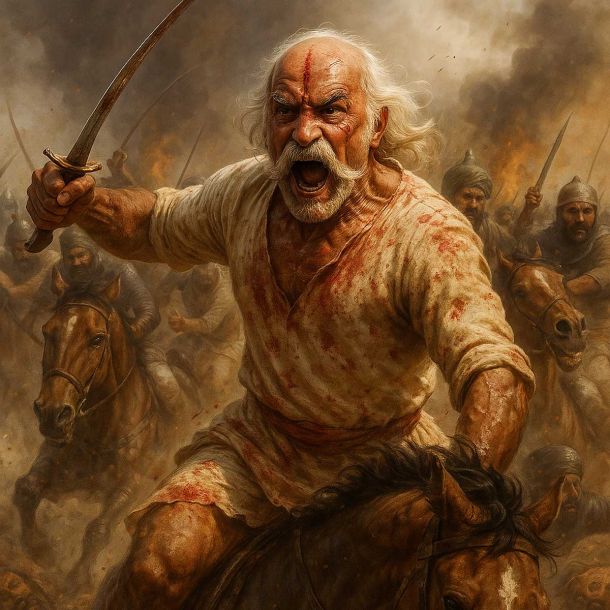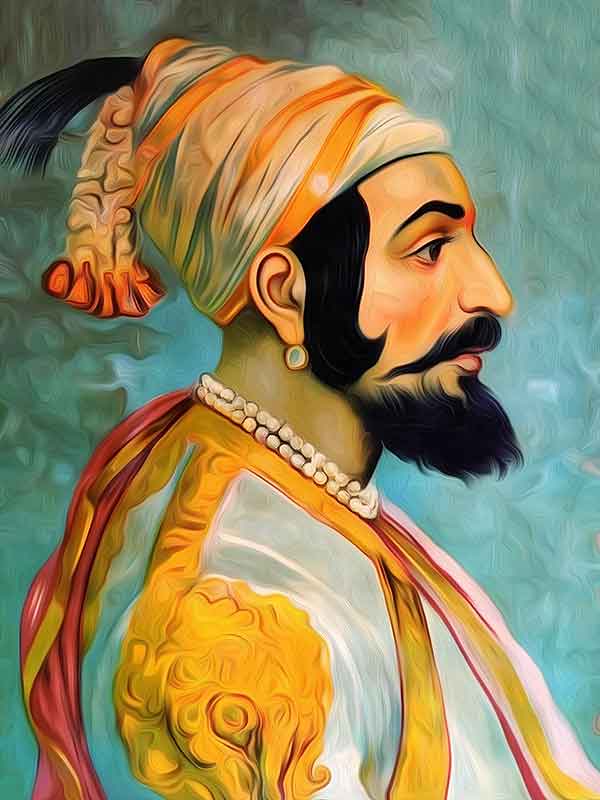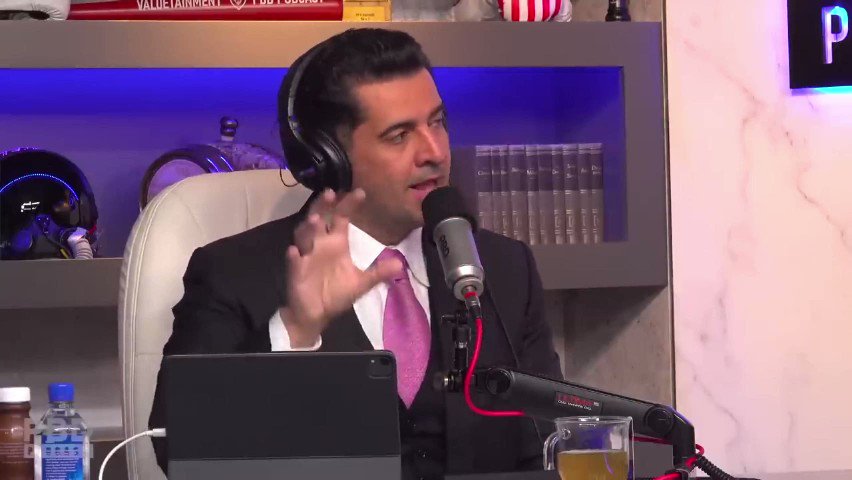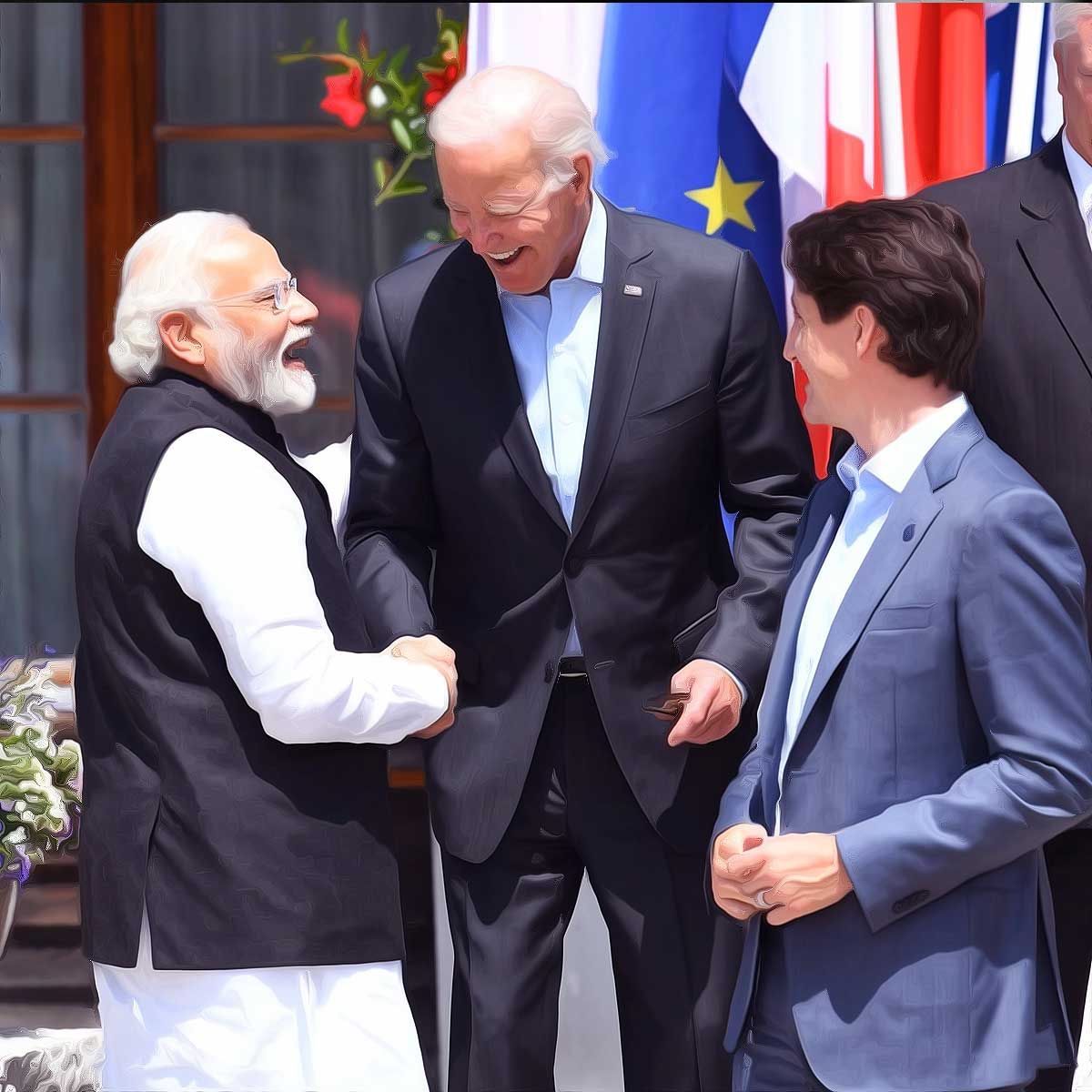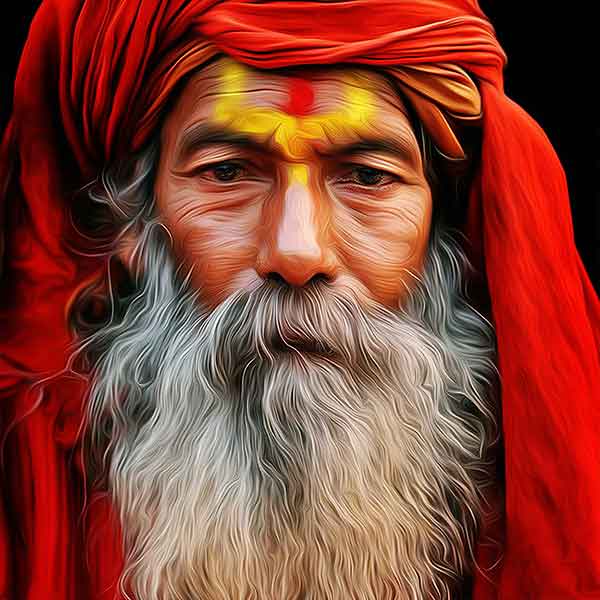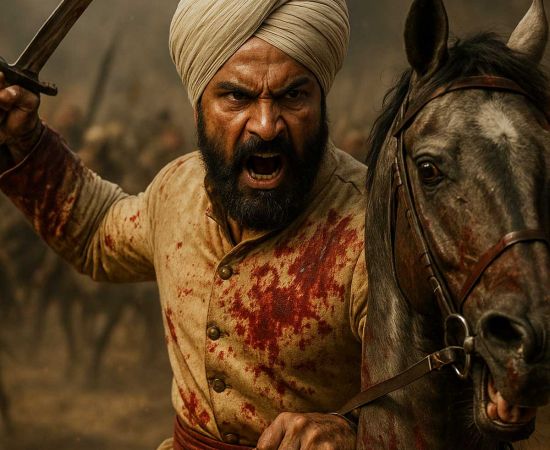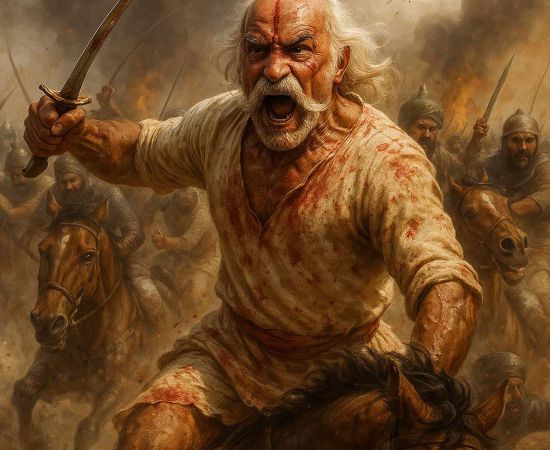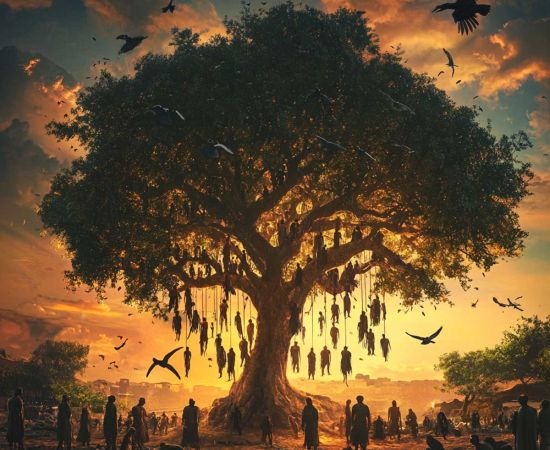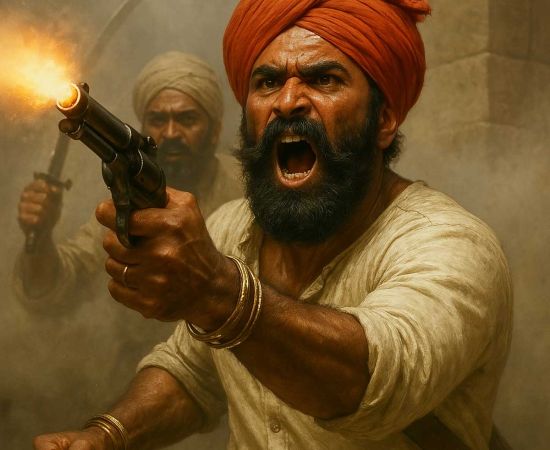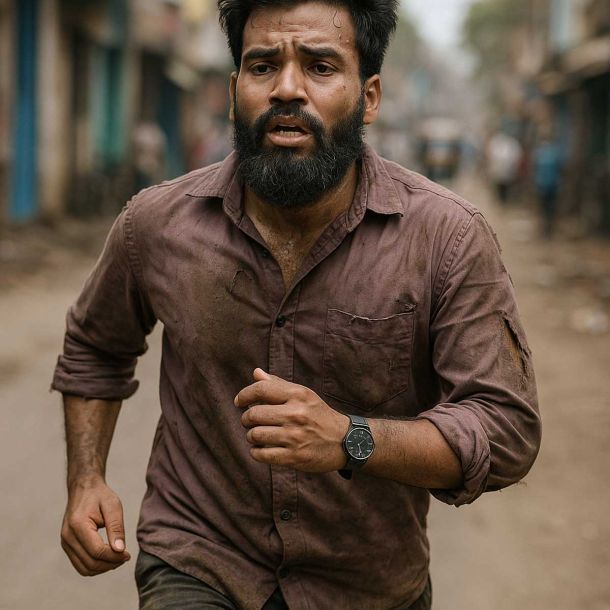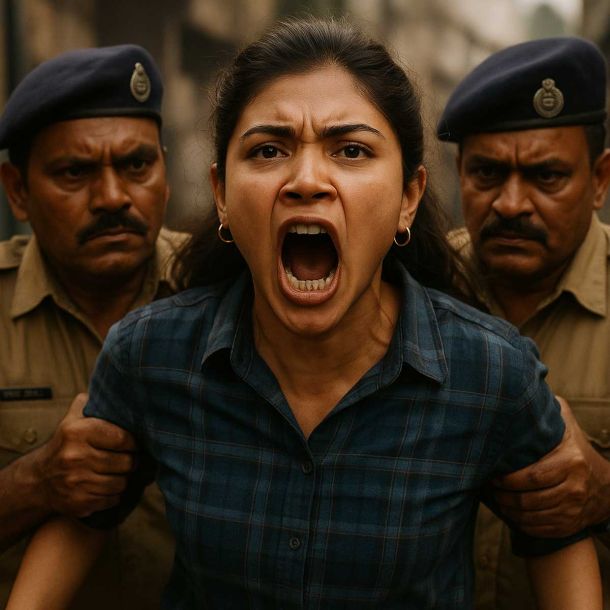MORE COVERAGE
Twitter Coverage
Satyaagrah
Written on
Satyaagrah
Written on
Satyaagrah
Written on
Satyaagrah
Written on
Satyaagrah
Written on
JOIN SATYAAGRAH SOCIAL MEDIA
"जय भवानी": Chhaava crosses ₹200 crore, tearing through the distortion of history, unveiling Aurangzeb’s brutality, triggering a tear-jerking meltdown of the Islamo-leftist cabal, and marking a civilizational awakening as Bharat reclaims its truth

Bollywood’s latest release, Chhaava, starring Vicky Kaushal and Rashmika Mandanna, brings the legacy of Chhatrapati Sambhaji Maharaj to life on the silver screen, marking a defining moment in cultural storytelling.
The film, based on the revered Marathi novel Chhava by Shivaji Sawant, portrays the struggles and sacrifices of Sambhaji Maharaj, the son of Chhatrapati Shivaji Maharaj and the second ruler of the Maratha Empire.
Its trailer opens with a powerful declaration: “The lion is no more, but Chhaava is still roaming the jungle.” This is followed by Vicky Kaushal, embodying the fearless warrior, roaring: “We will rip the Mughals apart if they dare to challenge the Maratha empire.” The air reverberates with chants of Har Har Mahadev, making it evident—this is more than just a period drama. Chhaava is a definitive statement, a seismic shift that ensures the truth is no longer shackled.
The much-anticipated historical film features Vicky Kaushal as Chhatrapati Sambhaji Maharaj and Rashmika Mandanna as Maharani Yesubai. The release of its trailer on January 22, 2025—exactly one year after the Praan Pratishtha of Ram Lalla in Ayodhya—is no coincidence. This date is a milestone in Bharat’s civilizational resurgence, a moment that signals the end of historical distortions and the beginning of unapologetic truth.
For centuries, the Marathas held Ayodhya, Kashi, and Mathura at the core of their mission for Hindavi Swaraj. From Malhar Rao Holkar to Ahilyabai Holkar, the fight for reclamation never ceased. Yet, they were never in a position to reclaim these sites without severe consequences for Hindus and their political power. Time moved forward, but their dream remained unfulfilled.
The decision to release the Chhaava trailer on this historic anniversary is more than symbolic—it is a clear indication that the tide has turned. The truth, long buried under layers of deliberate manipulation, is now breaking through, and there is no turning back.
The film Chhaava does not shy away from exposing the ruthless barbarity of Aurangzeb’s reign. It presents in raw and unfiltered detail the horrific tortures inflicted upon Chhatrapati Sambhaji Maharaj in an attempt to break his spirit and force him to convert to Islam. The Mughal tyrant’s cruelty knew no bounds—Sambhaji Maharaj was subjected to unthinkable brutality, including having his wounds rubbed with salt, his nails ripped out, his eyes gouged, and his tongue severed. Yet, despite such merciless torment, he remained resolute, never surrendering his faith in Hindu Dharma. His unwavering defiance against the forced conversion attempts earned him the revered title of Dharmaveer—a warrior who upheld his dharma till his last breath.
As expected, the usual cabal of Islamo-leftist lackeys, who glorify Islamic invaders and seek to erase India’s true history, have come out in full force against the film. This tragic trend includes not just those with clear anti-national agendas but also HINO (Hindus in Name Only), who willingly participate in whitewashing history rather than acknowledging the sacrifices of their own ancestors.
Despite their predictable outrage, Chhaava has struck a deep chord with the masses. The film has been overwhelmingly embraced by audiences across the country. One of the most powerful moments of this cultural awakening is seen in videos of young children passionately reciting Shiv Ghoshna in theatres—a testament to why the Indian entertainment industry desperately needs more nationalist, dharmic, and virtue-driven content. For too long, Bollywood has churned out woke, communist-infested propaganda films aimed at distorting history and undermining India’s civilizational roots. But now, the tide is turning.
Aurangzeb’s sheer hatred for the Marathas is well documented. In his view, they were the ultimate “infidels” who refused to submit to the will of Allah. His rage towards Chhatrapati Sambhaji Maharaj is evidenced in Maasir-i-Alamgiri, a Mughal court chronicle that describes in chilling detail how the emperor saw Sambhaji’s capture as a divine victory.
In the chapter titled ‘Capture and execution of Sambha’, the Mughal court historian writes: “Satan has been chained.” The biography further details how the Chhatrapati was dehumanized: “To speak more plainly, through the power of the Emperor’s fortune, the infernal infidel Sambha was made prisoner by the army.”
Muḥammad Sāqī Mustaʻidd Khān, another court chronicler, further records the brutality meted out to Sambhaji Maharaj and his followers: “Mukarabh Khan’s son Ikhlas Khan went inside the Haveli and dragged Sambhaji Maharaj and Kavi Kalash by their hair. Twenty-five of Maharaj’s chief followers and their wives were made prisoners.” Upon hearing the news of his capture, Aurangzeb, who was staying in Akluj, ordered Hamduddin Khan to transport the captives—Sambhaji Maharaj and Kavi Kalash— in chains, shackled and humiliated.
The Mughal emperor’s fanatical devotion to Islam dictated that Sambhaji Maharaj be paraded like a criminal. The historian further records: “The Emperor’s devotion to Islam ordered that Sambhaji Maharaj should be made to wear a wooden cap (a sign of a criminal), and as he enters the camp, there should be drum beating and trumpets pealing so that Muslims might be heartened and infidels (Hindus) will be disheartened.”
The horrors did not stop there. Kavi Kalash’s tongue was severed, and Sambhaji Maharaj’s eyes were gouged out. Yet, despite such unspeakable agony, Sambhaji Raje refused to surrender to Islam. Even when faced with certain death, he stood firm in his belief, unwilling to bow before tyranny. His warriors, including himself, were then hacked limb by limb, executed in the most inhuman manner imaginable.
The success of Chhaava among the Indian audience proves that people are no longer willing to accept history rewritten by the Islamo-leftist cabal. For decades, school textbooks, mainstream media, and Bollywood films have systematically erased the truth about figures like Sambhaji Maharaj, reducing their sacrifices to footnotes while glorifying tyrants like Aurangzeb.
However, the outrage from leftists and Aurangzeb’s ideological descendants over this film is proof that the battle for historical truth is far from over. Instead of acknowledging the reality of the past, they resort to screeching about Islamophobia, hoping that their cries will silence the growing demand for accurate historical representation. But no amount of manufactured outrage will stop this reformist change in Bollywood.
|
Chhaava: A Cultural Awakening That Has Shattered 70 Years of Bollywood Propaganda
The narrative that Bollywood meticulously crafted over the past seven decades is crumbling, and it took just three films to bring it down. X user Amitabh Chaudhary (@MithilaWaala) aptly summed up this transformation, stating: "It took us Hindu's just 3 movies to shatter the 70 years of propaganda set by Bollywood against Hindu's. #TheKashmirFiles #TheKeralaStory #Chhaava."
The emotional impact of Chhaava on its audience has been nothing short of overwhelming. The film has left people in tears, deeply moved by the harrowing sacrifices of Chhatrapati Sambhaji Maharaj—a warrior who endured unspeakable tortures for the sake of his motherland and Dharma. Viewers exiting theaters, their eyes filled with emotion, have expressed their heartfelt gratitude to the filmmakers for finally bringing Sambhaji Maharaj’s story to life on the silver screen.
The influence of the film extends beyond just emotional responses—it has sparked a cultural revival. Videos circulating online show children and adults passionately performing Shiv Garjana, a resounding war cry that echoes the spirit of the Maratha legacy. The sheer energy and devotion captured in these clips prove that Chhaava has successfully revived historical consciousness and instilled a newfound respect for warriors whose stories were systematically erased. The film is not just entertainment; it is an act of civilizational restoration, ensuring that Sambhaji Maharaj’s legacy reaches a global audience.
Social media platforms are overflowing with praise for Chhaava, with users commending its storytelling, historical accuracy, and its unapologetic portrayal of truth. The film signifies a major shift in Bollywood’s ideological discourse—from the left-leaning “reddish-green” narrative to an assertive, saffron-colored truth that refuses to be silenced.
As Chhaava smashes box office records, many are now calling for a cinematic tribute to yet another forgotten hero—Babu Kunwar Singh. His valor against the British was legendary, as he not only defeated the British army but humiliated them by bringing down their Royal Cross flag three times. Vinayak Damodar Savarkar himself acknowledged Kunwar Singh as one of the greatest guerrilla warfare tacticians in Indian history. Given the resounding success of Chhaava, the time is ripe for a grand historical film on Kunwar Singh, ensuring that his contributions to Bharat’s freedom struggle are also recognized and honored.
The fight for historical truth, however, is not without resistance. Up until February 2023, an entire city in India was still named after the genocidal tyrant Aurangzeb. The city of Aurangabad, a painful reminder of Mughal oppression, was only renamed Chhatrapati Sambhaji Nagar in 2023—a change that was long overdue. Predictably, Mughal apologists and self-proclaimed historians erupted in fury, labeling the renaming as Islamophobic and an attempt to “erase real history.”
When the decision was initially announced in 2022, Audrey Truschke, a notorious “historian” with a long track record of whitewashing Mughal atrocities, had a public meltdown. She took to social media to undermine Sambhaji Maharaj, tweeting: "Thinking today about Sambhaji, a seventeenth-century Maratha ruler who, by the end of his life, had alienated many supporters through brutal and miscalculated tactics. Seems that those who honour him may honour his legacy too. #Sambhaji."
Her statement reflects a larger agenda—downplaying Hindu warriors while glorifying Islamic invaders. But the tide has turned. Chhaava has reignited the discourse on how history has been manipulated, and it has forced many to confront the uncomfortable truths that were hidden for decades.
Unsurprisingly, Mughal fanatics and Aurangzeb’s ideological successors have been on a rampage since the film’s release. Their presence on social media has surged, with desperate attempts to defend Aurangzeb’s legacy and distort historical facts.
The reaction to the release of the Chhaava trailer was a preview of this meltdown. The film’s unflinching portrayal of Aurangzeb’s barbarism has shattered the carefully constructed myth of a “just” Mughal ruler, and the usual brigade of historical revisionists is scrambling to contain the fallout.
As expected, Chhaava has rattled the Islamo-Leftist cabal, which has now launched a coordinated attack against the film, attempting to discredit it by labeling it as political propaganda and historically inaccurate. But in their blind rage, they have only exposed their true intentions—to continue suppressing the Hindu genocide under Aurangzeb while glorifying his brutal rule.
In a shocking display of historical denialism, Islamists have openly mocked the horrific tortures endured by Hindus under Aurangzeb, while leftist propagandists scramble to dismiss the film’s brutal depiction of his atrocities as mere fiction. However, their blatant falsehoods collapse in the face of irrefutable historical records. The works of renowned historian Jadunath Sarkar extensively document the gruesome torture and execution of Chhatrapati Sambhaji Maharaj at the hands of Aurangzeb—not for war, not for politics, but solely for refusing to convert to Islam.
One of the loudest detractors of Chhaava is none other than Swara Bhasker, a failed Bollywood actress infamous for her Hinduphobic rhetoric and her unwavering loyalty to the Islamo-Leftist lobby. She attempted to downplay the recorded and well-documented horrors faced by Sambhaji Maharaj, dismissing the film as “partly fictionalised.” This disgraceful statement sparked massive outrage, with historians, journalists, and legal experts stepping forward to reaffirm the undeniable truth of Aurangzeb’s inhuman cruelty.
|
Taking to X, Bhasker, who describes herself in her bio as "sick of the hate & bigotry that is normalised in world, nicer & more patriotic than social media would have you believe," wrote:
"A society that is more enraged at the heavily embellished partly fictionalised filmy torture of Hindus from 500 years ago than they are at the horrendous death by stampede & mismanagement + then alleged JCB bulldozer handling of corpses – is a brain & soul-dead society. #IYKYK"
The January 29 Mahakumbh stampede that Bhasker referred to resulted in at least 30 tragic deaths. Uttar Pradesh Chief Minister Yogi Adityanath swiftly responded, announcing an ex gratia of ₹25 lakh for the kin of each victim. But Bhasker’s attempt to draw a false equivalence between this unfortunate tragedy and the brutal torture of Sambhaji Maharaj at the hands of Aurangzeb’s jihadi forces did not sit well with many.
|
Swati Chaturvedi, a journalist, directly countered Bhasker’s ahistorical claims, responding:
"Rethink this tweet, Swara. I am a student of history from Delhi University & nothing remotely fictional about the torture inflicted by Aurangzeb on Sambhaji Maharaj before he murdered him. Let’s not play games with our history, please. One outrage does not preclude the other."
|
Jai Anant Dehradai, a Supreme Court advocate, delivered a scathing response, exposing the sheer audacity of Bhasker’s Hinduphobia:
"Fictionalised filmy torture of Hindus"?! How dare you seek to make light of the supreme sacrifice made by Sambhaji Maharaj – who was brutally tortured and murdered by the wicked Mughal coward Aurangzeb! Swara Bhaskar – your deeply offensive and hurtful statement, that too on the birth anniversary of Chhatrapati Shivaji Maharaj, is obviously aimed at deliberately insulting the sentiments of millions of Indians and to create strife between religious groups. You, madam, ought to be prosecuted for this criminal offence to the fullest extent permissible under the law."
The backlash didn’t stop there. Netizens, scholars, and social media users came out in full force to expose Bhasker’s shameless historical revisionism.
|
X user Rishi Bagree pointed out the absurdity of her claims, stating:
"On the contrary, the movie didn’t even show the fraction of torture Chhatrapati Sambhaji Raje was subjected to…"
|
Another user, Nitendra, called out the hypocrisy of the leftist ecosystem, writing:
"So now, Hindus caring about their history and reclaiming their narrative = 'brain & soul-dead society'? But crying about Mughal glorification, victimhood politics, and fake secularism is 'intellectual activism'?"
|
One of the most direct and unapologetic takedowns came from legal expert Sanya Talwar (@LegalTalwar), who minced no words:
"Swara, just because you are married to a Muslim man, you don’t have the right to belittle sacrifices of great Hindu men. This may sound heavily below the belt, but your tweet about our Chhaava is outrageous. Stop being so enticed by political Islam that you forget your forefathers."
Many have speculated that Bhasker’s marriage to a pro-Islamist has blinded her to the Hindu genocide, making her an apologist for Mughal barbarism. But the intensity of the backlash she has received proves one undeniable truth—the days of distorting India’s history for ideological agendas are over.
For far too long, the Islamo-Leftist ecosystem has dictated what history should be taught, glorifying invaders while erasing the sacrifices of Hindu warriors. But the success of Chhaava has demonstrated that Indians are no longer willing to accept these lies. The hollow cries of Islamophobia and desperate attempts to discredit the film will not change the fact that Sambhaji Maharaj was a martyr who refused to bow before tyranny, and his story will now be told for generations to come.
From Whitewashing Aurangzeb to Attacking Chhaava: The Last Stand of Islamists and Leftists Against Truth
The backlash against Chhaava has laid bare the deep-rooted hypocrisy of the Islamist-Leftist ecosystem, which for decades has worked tirelessly to whitewash the crimes of Mughal tyrants while silencing any effort to highlight Hindu resistance and valor. The current outrage is not just about one film—it is about the collapse of a decades-old propaganda machine that sought to portray the Mughals as benevolent rulers and erase the true horrors inflicted upon Bharat and its people.
It is hardly surprising that Muslim fanatics continue to idolize Aurangzeb, given that he followed Islamic law to the letter, ruling with an iron fist and enforcing his doctrine of oppression against Hindus. Aurangzeb was, indeed, a good Muslim ruler in the way his followers define it. His unwavering commitment to persecuting Kafirs, demolishing temples, imposing Jizya, and humiliating Hindus made him the ideal symbol of Islamic supremacy. His reign of terror was not an accident but a deliberate execution of religious diktats, ensuring the systematic suppression of Hindus and the erasure of their spiritual and political identity.
While Islamists openly revere Aurangzeb for his religious zeal, the real tragedy is that India’s mainstream discourse has, for decades, presented him as a just, noble, and honorable ruler. Through textbooks, academic lectures, and Bollywood narratives, the Mughal era was repackaged as a golden period of prosperity, religious harmony, and economic growth. The absolute whitewashing of history led to generations of Indians being fed a manufactured lie, where Aurangzeb’s blood-soaked rule was disguised as a testament to good governance.
But today, Chhaava stands as undeniable proof that Bharat has broken free from this deception. The fact that such a film can be made, released, and widely celebrated without fear of being buried under “secular outrage” is evidence that Hindus have successfully pushed past the barriers of controlled discourse that once labeled the truth as radical and accepted lies as mainstream narratives.
This shift is best understood through the Overton Window, a concept that defines the spectrum of ideas and policies that society deems acceptable at any given time. This framework, proposed by Joshua Treviño, categorizes the six degrees of public acceptance as:
- Unthinkable
- Radical
- Acceptable
- Sensible
- Popular
- Policy
For decades, acknowledging the barbarity of Islamic invaders was considered “unthinkable” or “radical.” It was a historical fact that no one dared to speak in public without being labeled “communal” or “Islamophobic.” Instead, the narrative was carefully controlled to portray Mughals as India’s greatest benefactors, and any deviation from this script was aggressively shut down.
But slowly, the Overton Window shifted. Truths that were once deemed too controversial began moving towards acceptability. The publication of unbiased historical research, the rise of nationalist voices, and the collective memory of Hindus refusing to be erased led to a slow but steady transformation.
The real breakthrough came when the first major steps were taken to remove Mughal glorification from Indian textbooks. The wails of academic elites, leftist intellectuals, and so-called historians were deafening. They accused the government of “erasing history” and “weaponizing the past.” But their panic revealed their true fear—not that history was being erased, but that the fabricated history they had so carefully constructed was being dismantled.
Their argument was simple: If students no longer learned about the “glory” of the Mughals—a false narrative that painted them as architects of India’s economic and cultural prosperity—they would begin to see the truth for what it was. They would realize that Bharat’s civilizational greatness existed despite Islamic invaders, not because of them.
This was the real reason behind their outrage—the fear of Hindus waking up to their past.
The deliberate distortion of history was not just a mistake—it was a carefully orchestrated psychological experiment designed to manipulate public perception, shape identities, and control discourse. The strategy was simple: glorify Muslim invaders, exalt their rule as a golden era, and ensure that their modern-day admirers could claim to be "proud Indian citizens" who respected the nation’s history.
On the other hand, any attempt to expose the reality behind this admiration—an admiration rooted in the belief that these invaders "tamed" Hindus as per the diktats of the Quran—was met with immediate suppression. Those who spoke out were branded as bigots, conspiracy theorists, or labeled with the most dreaded of all terms—Hindu nationalists. The goal was not just to whitewash the crimes of invaders but to criminalize truth-telling itself.
This strategy has been ruthlessly deployed time and again. One of the most glaring examples of this historical manipulation is the Malabar genocide of Hindus in 1921. For decades, leftist historians fed the public a convenient lie—claiming that the murder of thousands of Hindus was nothing more than an uprising of oppressed Muslim peasants against cruel Hindu landlords. This fabricated narrative was repeated so often that generations grew up believing that the events of 1921 were a class struggle, rather than a targeted religious massacre.
The documentary evidence that completely debunks this theory was conveniently ignored. Despite clear records that the peasant uprising narrative was false, the intellectual elite continued to peddle the lie.
In the same vein, Khilafat leaders like Shaukat Ali and Maulana Mohammad Ali were immortalized as freedom fighters in Indian history textbooks. Students were repeatedly told that these men fought for India’s independence from British rule and that they were heroes of the freedom struggle.
But the truth behind their motivations was deliberately buried. These men were not fighting to free India from colonial rule—they were fighting to restore the Ottoman Empire and re-establish the Turkish Caliphate. Their loyalty was not to India but to a foreign Islamist cause, and in their pursuit of this goal, they actively participated in the massacre of Hindus. Yet, this fact was neatly erased from the pages of history, never to be acknowledged or discussed.
The Malabar region of Kerala had a significant Muslim population, commonly known as Moplah or Mappila. These Muslims primarily worked as laborers under Hindu landlords. Many of them were poor, uneducated, and deeply religious, believing themselves to be direct descendants of Prophet Mohammad.
|
It was in this environment that Ali Musliar, a religious leader deeply influenced by the speeches of Khilafat leaders Mohammad and Shaukat Ali, rose to prominence. Using his position and influence, he convinced the Moplah population that the end of British rule was imminent and that a powerful Muslim army would soon invade India.
Under this false promise of impending Islamic domination, the Moplahs were mobilized, armed, and prepared for a full-scale revolt. What initially began as an anti-British movement quickly transformed into an outright religious war against Hindus.
Ali Musliar went even further—declaring himself king and establishing Ernad and Valuvnad as an Islamic State. When the British deployed troops to suppress the uprising, the Moplahs turned their weapons on innocent Hindus, unleashing an orgy of bloodshed, slaughter, and terror.
Thousands of Hindus were butchered in cold blood, their lands were seized, and women were raped and forcibly converted. Hindu temples were razed to the ground, replaced with mosques that signified the victory of Islam over "idol worshippers." The violence was so brutal that even the British, who were accustomed to dealing with uprisings, were horrified at the sheer scale of religious fanaticism.
Yet, despite all this historical evidence, the narrative of the Malabar genocide remains one of the most manipulated episodes in Indian history. The true intent of the Moplah rebellion—to create an Islamic state and eliminate Hindus—was scrubbed clean from historical records. Instead, it was presented as a movement of oppressed farmers seeking justice, rather than what it truly was—an attempt at forced Islamization through mass murder and ethnic cleansing.
The Malabar genocide of 1921 remains one of the most brutal and blood-soaked chapters in Indian history—a tragedy that has been systematically downplayed, rewritten, and buried under layers of historical distortion.
In August 1921, as per estimates, close to ten thousand Hindus were massacred. The violence was not random; it was deliberate, organized, and fuelled by religious fanaticism. A large number of Hindu women were raped, temples were desecrated, homes were burned, and entire communities were banished from their own lands. The barbarity knew no limits—Hindus were burned alive, their skin was peeled off, and in some instances, they were forced to dig their own graves before being buried in them.
Yet, despite the overwhelming evidence of an anti-Hindu pogrom, Marxist historians worked tirelessly to downplay the horror, insisting that it was an economic struggle, not a religiously motivated massacre. They fabricated a narrative of oppressed Muslim peasants rising against oppressive Hindu landlords, conveniently ignoring first-hand accounts, government reports, and survivor testimonies that prove otherwise.
|
If the Moplah rebellion was truly about economic injustice, then by that logic, there should have been similar uprisings against landlords all over the country. But no such revolts happened, because this was never about economic oppression. This was a jihad. The Hindus were not killed for being landlords—they were killed for being Kafirs.
At the heart of this Hindu genocide was the Khilafat movement, a movement spearheaded by none other than Mohandas Karamchand Gandhi, who, in his blind appeasement of Islamists, empowered fundamentalists and laid the groundwork for the bloodshed. The Khilafat movement, aided by Gandhi, unleashed the beast of Islam-driven Hindu massacres and planted the seeds of communal hatred—the poisonous fruits of which still haunt India today.
For decades, Hindus have been made to forget their history, conditioned to ignore their own wounds while being forced to glorify their tormentors. But now, the shift in the Overton Window is undeniable.
The renaming of Aurangabad to Chhatrapati Sambhaji Nagar and the release and celebration of Chhaava are not just symbolic victories—they are a testament to how far Hindus have come in reclaiming their truth. What was once considered radical and unthinkable just a decade ago has now not only entered mainstream consciousness but has also begun translating into actual policy.
There was a time, not too long ago, when the idea of a mainstream Bollywood actor like Vicky Kaushal chanting ‘Har Har Mahadev’ on screen was unimaginable.
A few years ago, the thought of a film daring to depict Aurangzeb as the weak, scrawny, and tyrannical ruler that he truly was would have been considered cinematic blasphemy.
A few years ago, the possibility of Bollywood even acknowledging the capture, gruesome torture, and brutal execution of Chhatrapati Sambhaji Maharaj for refusing to convert to Islam would have been shut down immediately.
A few years ago, any film that dared to showcase the valiant Maratha campaign to establish Hindavi Swaraj would have been demonized as Hindu fundamentalism or terrorism.
But today, everything has changed.
Not only is such a movie anticipated, but it is also being celebrated across the nation. What was once forbidden is now ceremonialized. What was once shunned as ‘communal’ is now embraced as historical truth.
Hindus have realized an uncomfortable truth—if they don’t tell their stories, no one else will. If they don’t speak of their warriors, history will be rewritten to glorify their oppressors.
The tides are turning. The lies that were once force-fed to generations are unraveling. And perhaps, just perhaps—Hindus are finally waking up.
|
Will Promote Chhaava to Ensure History Reaches More People: Devendra Fadnavis
Maharashtra Chief Minister Devendra Fadnavis reaffirmed his government’s commitment to promoting Chhaava, the Vicky Kaushal-starrer based on the life and sacrifices of Chhatrapati Sambhaji Maharaj. On Wednesday, Fadnavis made it clear that the state would take every possible step to ensure that this crucial chapter of Indian history reaches as many people as possible.
Amid growing calls for the film to be made tax-free, Fadnavis addressed the demand by stating:
"Whenever any state makes a movie tax-free, it is exempted from entertainment tax. We decided to permanently end entertainment tax in Maharashtra in 2017. Hence, Chhaava is already exempted from tax."
This decision, taken years ago, ensures that audiences across Maharashtra can access the film without the burden of additional entertainment tax, allowing more people to watch and learn about the legacy of Chhatrapati Sambhaji Maharaj.
Fadnavis also shared that although he had not yet watched the film, he had received overwhelmingly positive feedback from the public. He expressed his appreciation for the filmmakers, stating:
"I am happy that such a good movie has been made on Chhatrapati Sambhaji Maharaj, and I am informed by those who watched it that history has not been distorted. Chhatrapati Sambhaji Maharaj is known for his bravery and valor. History has done injustice to him."
The chief minister’s statement reflects a long-standing grievance among historians and nationalist scholars—that Chhatrapati Sambhaji Maharaj’s contributions have been systematically downplayed or misrepresented in Indian historical narratives. The fact that a mainstream Bollywood film is now portraying his real struggle is a significant step toward correcting these historical injustices.
Beyond discussing the film, Fadnavis also addressed the controversy surrounding alleged objectionable remarks made by an actor against Sambhaji Maharaj. He assured the public that the government "would not tolerate any disrespect towards historical figures," making it clear that any attempt to defame or demean Bharat’s great warriors would be met with strong action.
Fadnavis was in the city to attend a rally organized on the birth anniversary of Chhatrapati Shivaji Maharaj, where he emphasized the Maharashtra government’s commitment to preserving and promoting the state’s glorious history.
As part of this effort, he also launched the second phase of Shiv Srushti, a historical theme park dedicated to Chhatrapati Shivaji Maharaj, at Ambegaon Budruk. The theme park, envisioned as a grand tribute to the Maratha empire, aims to educate future generations about Shivaji Maharaj’s governance, military strategies, and commitment to Swarajya.
To further support this initiative, Fadnavis announced that the Maharashtra government would provide ₹50 crore for the third phase of Shiv Srushti, ensuring that this ambitious historical project continues to grow and inspire visitors.
Chhaava Box Office Collection Day 7: Vicky Kaushal’s Historical Drama Shatters Records, Crosses ₹200 Crore Mark
Vicky Kaushal’s Chhaava has set the box office on fire, proving to be a massive blockbuster as it surpasses the ₹200 crore milestone within just seven days of its theatrical release. Directed by Laxman Utekar, the film has been on a phenomenal run since its opening day, maintaining strong momentum and attracting audiences in massive numbers across the country.
According to the Sacnilk report, Chhaava opened with an impressive ₹31 crore collection on February 14, 2025 (Friday), signaling a strong start at the box office. The film’s success soared over the weekend, raking in ₹37 crore on Saturday and ₹48.5 crore on Sunday as audiences thronged theaters to witness the grand retelling of Chhatrapati Sambhaji Maharaj’s heroic saga.
However, like most films, Chhaava saw a dip in collections on its first Monday, earning ₹24 crore, followed by ₹25.25 crore on Tuesday. Fortunately, the film regained momentum mid-week, earning ₹32 crore on Wednesday, demonstrating that word-of-mouth appreciation and the public’s interest in historical cinema remain strong.
On Day 7, the film is estimated to have collected ₹2.5 crore, pushing its total box office collection to a staggering ₹200.25 crore within its first week.
|
Chhaava Box Office Collection Breakdown
- Day 1 (Friday): ₹31 crore
- Day 2 (Saturday): ₹37 crore
- Day 3 (Sunday): ₹48.5 crore
- Day 4 (Monday): ₹24 crore
- Day 5 (Tuesday): ₹25.25 crore
- Day 6 (Wednesday): ₹32 crore
- Day 7 (Thursday - Estimated): ₹2.5 crore
- Total Collection (Week 1): ₹200.25 crore
This box office triumph reaffirms the audience’s growing appetite for historical dramas that authentically portray Hindu warriors and their sacrifices, breaking free from the traditional Bollywood narratives that have often distorted history.
During a promotional event for Chhaava, Vicky Kaushal spoke passionately about his experience portraying Chhatrapati Sambhaji Maharaj, calling it an honor to step into the shoes of such a legendary warrior. He expressed his gratitude to the director Laxman Utekar and producer Dinesh Vijan for entrusting him with this role.
Vicky Kaushal stated:
"Mere liye mera saubhagya hai ki mujhe Chhatrapati Maharaj ka role nibhaane ka mauka mila. I am very grateful to Laxman Utekar and Dinesh Vijay Sir for choosing me for this role. Hamari ek hi koshish hai ki Maharashtra mein to sabko pata hai, bacche-bacchon ko pata hai. Par poori duniya mein, ghar-ghar mein bacche-bacchon ko pata lagna chahiye ki humare raje kaise the."
His words reflect the larger cultural shift taking place in Indian cinema, where films like Chhaava are ensuring that the sacrifices of Hindu warriors are no longer overlooked or misrepresented but are instead celebrated on a grand scale.
 |
 Support Us
Support Us
Satyagraha was born from the heart of our land, with an undying aim to unveil the true essence of Bharat. It seeks to illuminate the hidden tales of our valiant freedom fighters and the rich chronicles that haven't yet sung their complete melody in the mainstream.
While platforms like NDTV and 'The Wire' effortlessly garner funds under the banner of safeguarding democracy, we at Satyagraha walk a different path. Our strength and resonance come from you. In this journey to weave a stronger Bharat, every little contribution amplifies our voice. Let's come together, contribute as you can, and champion the true spirit of our nation.
 |  |  |
| ICICI Bank of Satyaagrah | Razorpay Bank of Satyaagrah | PayPal Bank of Satyaagrah - For International Payments |
If all above doesn't work, then try the LINK below:
Please share the article on other platforms
DISCLAIMER: The author is solely responsible for the views expressed in this article. The author carries the responsibility for citing and/or licensing of images utilized within the text. The website also frequently uses non-commercial images for representational purposes only in line with the article. We are not responsible for the authenticity of such images. If some images have a copyright issue, we request the person/entity to contact us at This email address is being protected from spambots. You need JavaScript enabled to view it. and we will take the necessary actions to resolve the issue.
Related Articles
- Master of fabrication and deceit: 4 occasions where eminent “historian” D N Jha misled to suit the narrative
- Hitler’s propaganda minister Joseph Goebbels said 'Repeat a lie often enough and it becomes the truth' - Whitewashing a genocide – how the exodus of Kashmiri Pandits is being blamed on Hindus instead of on Islamists
- Father of the Nation! Absolutely not. Mohandas Karamchand Gandhi was not the father of the nation either officially or otherwise
- Calcutta Quran Petition: A petition to ban the Quran altogether was filed 36 years ago, even before Waseem Rizvi petitioned for removing 26 verses from Quran
- ‘Casteless Hindu’ is Not a Paradox. It is The keystone of ‘Ghar Wapsi’ and Hindutva
- The Lost City of Dwarka and step-motherly treatment to it's Archaeological excavations as revealed by RTI: Shocking state of neglect for Hindu sites by the Government
- Delhi Police Commissioner rubbished social media claims that saffron flags were hoisted atop a Jahangirpuri mosque, attempts of whitewashing the perpetrators by 'liberal cabal' and Altnews co-founder falls flat
- "आख़िर क्यूँ": Why should Hindus honour tyrant Salar Masud Ghazi who came to kill & convert, when his fake shrine in Prayagraj sparked Islamist outrage over saffron flags reclaiming a space long hijacked by those glorifying Hindu-hating invaders as saints
- Why does the Left ignore India’s indigenous intellectual traditions: Leftists have long claimed that Hindus are not intellectual and are unscientific, mindlessly repeating old racist colonial and missionary propaganda
- Let’s remember Karsevaks this Diwali, who laid down their lives for Ram Temple: Ayodhya massacre of Hindu devotees, 2 Nov 1990
- Gandhi corrupted the original Hindu bhajan ‘Raghupati Raghav Raja Ram’ by including ‘Allah’
- Rootless liberal Macaulayputra and the two Indias when it comes to secularism
- 'We are like vultures, we feed on these moments': Viral Video of Rajdeep Sardesai admitting that Attack on the Indian Parliament was a great day
- Busting the myth of “glories” of the Mughal Empire and its economic superiority as fantasized by Indian Marxist and Liberal historians
- After continuous protests from Hindus, Gurugram administration withdraws its decision to allow Namaz in 8 public places

